Conserving the ‘Spilsby ichthyosaur’ Nigel Larkin March 2015
Condition of the specimen:
This material required cleaning, conserving, labelling and packaging in suitable permanent storage media.
Many of the bones had been ‘consolidated’ and glued together at the time of collection with a substance (PVA?)
that had not penetrated the material but had formed a substantial film on the surface of the bone.
This mostly affected the vertebrae that were found in pieces and had been glued back together, possibly when still damp.
This film was softened with acetone and removed with scalpels and some of the adhering sandy matrix was brushed-off the bones.
The loose sandy matrix was kept and labelled in case it is of use for future study. Paper that had stuck to some of the vertebrae and ribs when consolidated
at the time of collection was removed (again, using acetone and scalpels). The most friable and delicate vertebrae were then consolidated with Paraloid B72
in acetone at about 10% and the breaks in the vertebrae were made a little stronger by the application of Paraloid B72 adhesive (reversible with acetone) in the
cracks.
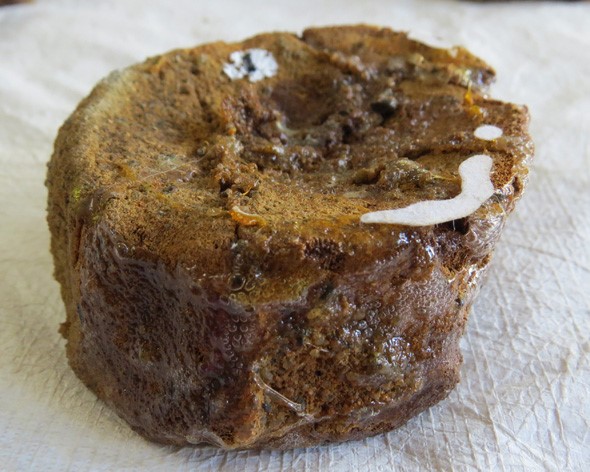
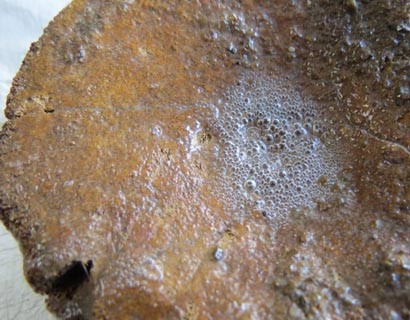
Above, one of the over-consolidated vertebrae with excessive glue on the surface and some paper adhering to it. Below, the same vertebra after cleaning.
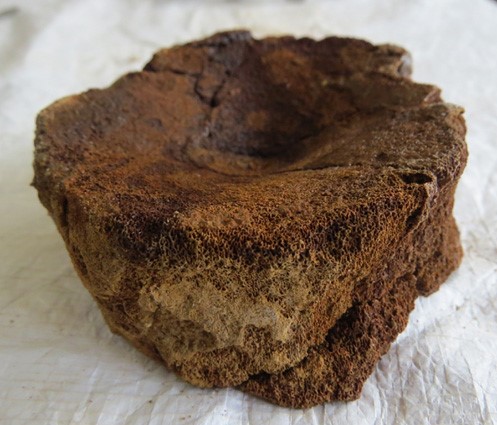
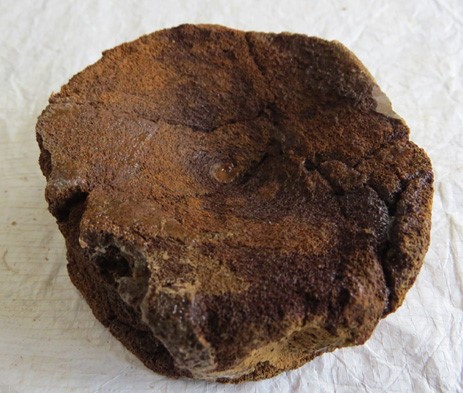
Old labelling in the form of single numerals applied to white areas with felt pen on the vertebrae was removed (with acetone and scalpels)
and printed labels containing the accession number and appropriate part number were stuck to the vertebrae with Paraloid B72 adhesive.
The vertebra labelled ‘1’ was relabelled withe the acession number plus '.1' and so on.
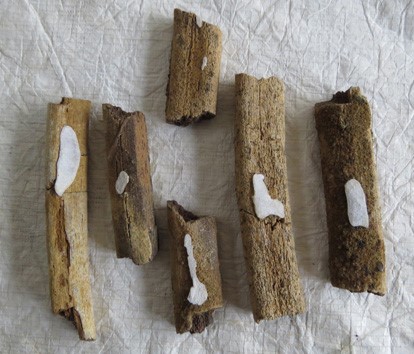

Above left: paper adhered to some of the rib fragments. Above right: the same ribs after cleaning.
Small bone fragments (remaining unlabelled) in small polybags were stored in small crystal boxes, with a single label in the crystal box, and the single ichthyosaur tooth was stored separately in its own crystal box with a label, after some glue was removed from its surface. This specimen was too small for a label to be stuck to it.
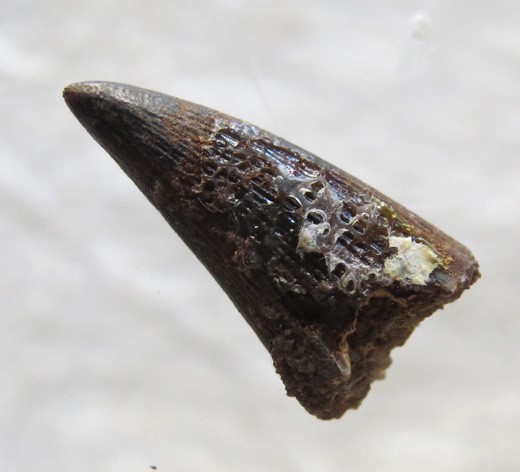

Above left: the tooth covered with excessive adhesive. Above right: the tooth after cleaning.
The rib fragments were assessed and some were joined back together, using Paraloid B72 adhesive after the joins were consolidated (Paraloid B72 at 10% in acetone). They were all place in a couple of small crystal boxes, with a single label for each box.
The vertebrae were stored in ‘nests’ of acid-free tissue paper (not wrapped, which ends up damaging them) and placed together with all the other material in a single lidded museum cardboard box, with a label on the outside.
For more details about what we can do for you, or for a quote, please
contact:
enquiries@natural-history-conservation.com
We
are members of the Institute of Conservation.